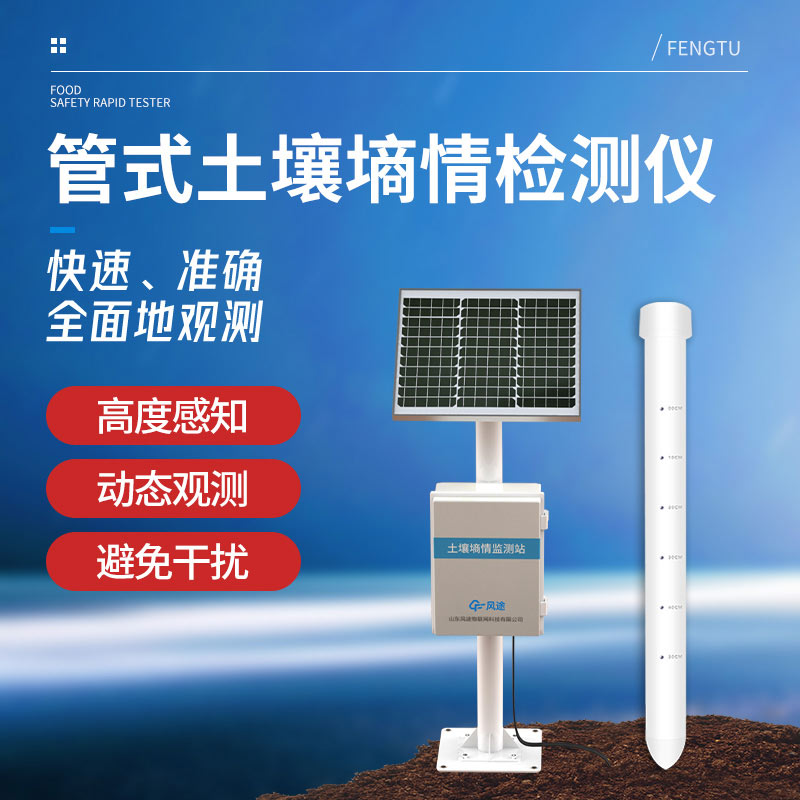Shandong Fengtu IOT Technology Co., Ltd
Sales Manager:Ms. Emily Wang
Cel,Whatsapp,Wechat:+86 15898932201
Email:info@fengtutec.com
Add:No. 155 Optoelectronic Industry Accelerator, Gaoxin District, Weifang, Shandong, China

Sales Manager:Ms. Emily Wang
Cel,Whatsapp,Wechat:+86 15898932201
Email:info@fengtutec.com
Add:No. 155 Optoelectronic Industry Accelerator, Gaoxin District, Weifang, Shandong, China
time:2024-08-07 08:38:54 source:Weather Station viewed:467 time
What is the coverage area of a typical soil moisture station?
Generally speaking, it is 20-30 acres.
Farmers know that it is important to check the moisture content of the soil before planting, which is called "moisture content". If the moisture is good, the crop will grow well; if it is bad, the crop will not grow well. However, many people may not know exactly how to look at the moisture level, such as how to tell whether the soil is too dry or too wet.
Simply put, moisture is the degree of wetness or dryness of the soil. If the soil is too dry, it is "out of moisture"; if it is a little dry, it is "out of moisture"; if it is not dry and not wet, it is just right, it is "appropriate moisture"; if it is too wet, it is If it is too wet, it is "too much moisture". Farmers can find out if the soil moisture is suitable for planting by looking at the color of the soil, pinching the soil, or measuring it with a tool.
When seeding a crop, it is critical to ensure two conditions: first, the timing of the seeding should be right, which is largely dependent on air and soil temperatures. Generally speaking, the best time to sow a crop is when the air temperature stays between 15 and 28 degrees Celsius and the soil temperature stays between 14 and 16 degrees Celsius. The next thing is to have the right soil moisture, which can be determined by measuring the water holding capacity of the field and the water content of the soil. Ideal soil moisture is when the field water holding capacity is 75% to 85% and the soil water content is between 16% and 20%, which is the most favorable condition for crop sowing and growth.
The Soil Moisture Monitoring Station is an efficient, energy-saving, easy-to-install automatic weather monitoring device designed for outdoor environments with high-precision observation capabilities. It supports a variety of data transmission methods, including wired, GPRS and Bluetooth, and can be quickly put into use without complicated debugging after installation, making it ideal for agriculture, forestry, geological research, educational institutions and scientific research units.
The main function of this monitoring station is to monitor the moisture content and temperature of the soil in real time, obtaining the volumetric water content (VWC) and temperature data of the soil by means of specialized moisture and temperature sensors. In order to meet the needs of different users, the monitoring station can also add sensors for meteorological parameters such as soil conductivity, pH, air temperature, humidity, solar radiation and rainfall according to the needs, providing a more comprehensive monitoring service.

In numerous fields such as meteorological observation, aerospace, and environmental monitoring, measuring wind speed and direction is of extremely great significance. Wind speed and direction data are essential for improving the accuracy of weather forecasts. They can assist meteorological departmen...
With the intensification of global climate change, climate anomalies are frequent, and extreme weather events such as heavy rainfall and flooding occur from time to time, posing great challenges to the construction and development of cities and villages. Under such circumstances, the protection of t...
Measuring air velocity data in ventilation ducts is important for the following reasons:1. To ensure proper ventilation: The primary purpose of ventilation ducts is to provide air flow to ensure fresh and comfortable indoor air. Measuring air velocity can help determine whether the ventilation syste...
I. PrefaceAs the “oxygen provider” of modern cities, the subway not only drives the urban economic development but also leads the transformation of the way people live. However, in recent years, subway accidents have occurred frequently, and the number of casualties has been on the rise, reflectin...